People
Iranian-American Artist Siah Armajani, Who Reimagined Public Spaces in Cities Around the World, Has Died at 81
The artist, who was born in Tehran, moved to the US in 1960.
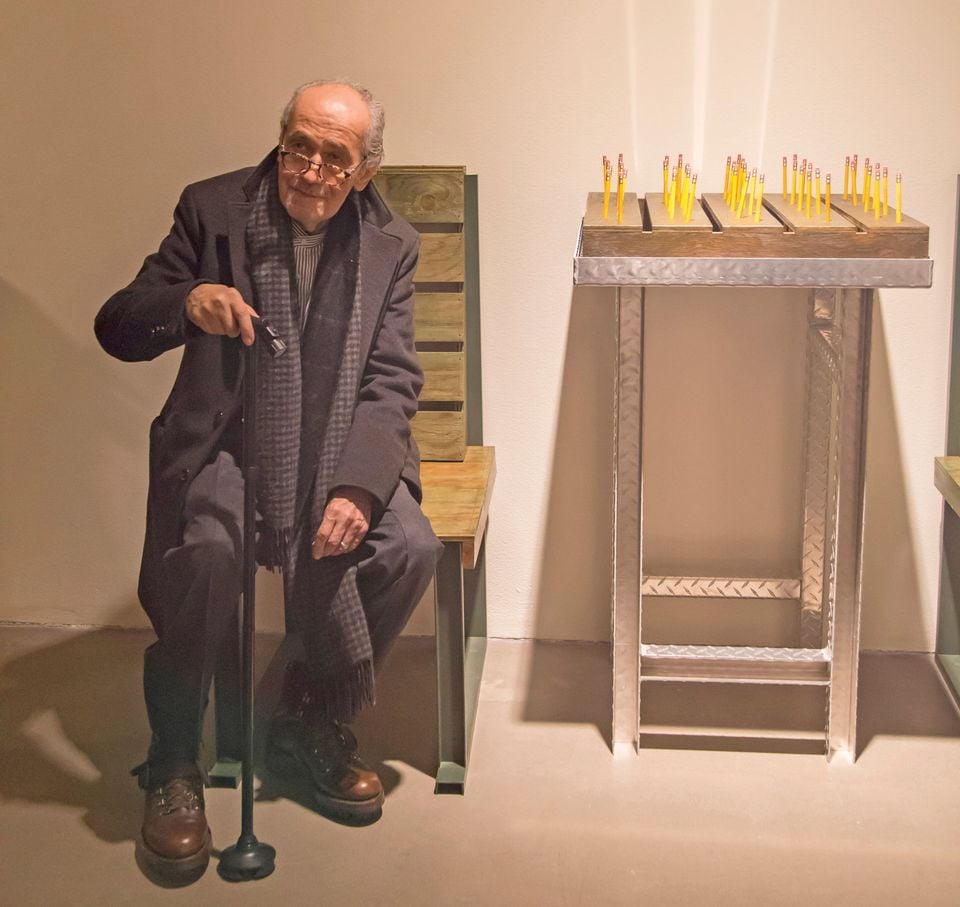
The artist, who was born in Tehran, moved to the US in 1960.

Sarah Cascone

The Iranian-American artist Siah Armajani, best known for his community-focused, large-scale public installations that exist at the intersections of art, architecture, and technology, has died at the age of 81.
The cause of death was heart failure, according to Art Asia Pacific. New York’s Metropolitan Museum of Art, which presented the first US retrospective of the artist’s work, “Siah Armajani: Follow This Line,” in 2019, was the first to announce Armajani’s death, sharing the news on Twitter.
The show, which originated at the Walker Art Center in Minneapolis, featured over 100 works from Armajani’s six-decade career. It was accompanied in New York by a restaging of the artist’s Bridge Over Tree, one of his key public works, by the Public Art Fund in Brooklyn Bridge Park. The piece, which offered viewers an absurd 91-foot-long walkway over a small pine tree, was originally executed at the Walker in 1970.
“I’ll never forget the moment when Siah saw the work in Brooklyn Bridge Park for the first time,” recalled Public Art Fund director and chief curator Nicholas Baume in an email to Artnet News. “Smiling, holding my arm for support, he said, ‘I never thought I’d see this work again; I thought it had gone to sculpture heaven.'”
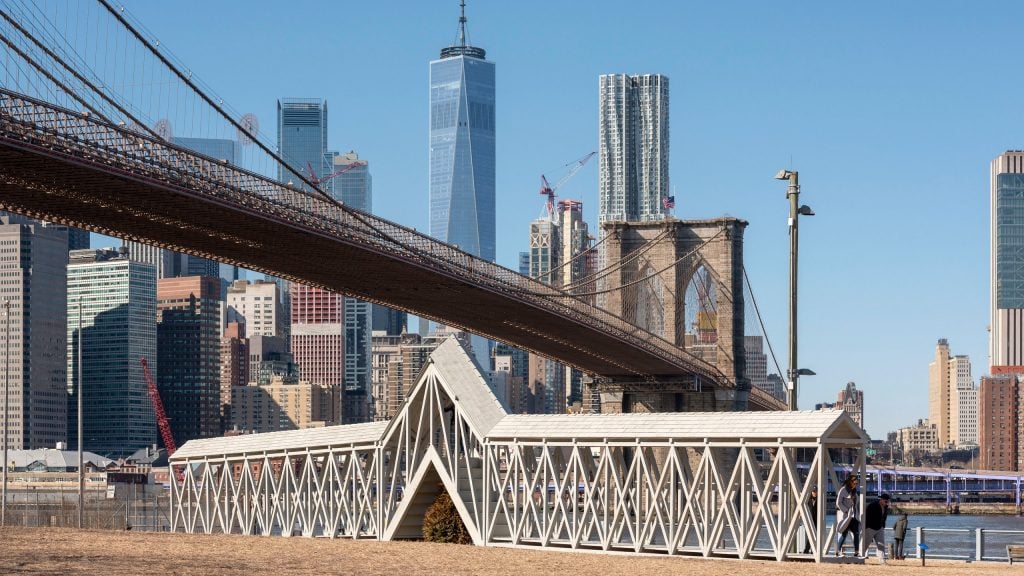
Siah Armajani, Bridge Over Tree in Brooklyn Bridge Park. Photo by Timothy Schenck, courtesy of the Public Art Fund.
“It speaks to his sense of humor,” said Max Protetch, who represented Armajani at his now-shuttered New York gallery for many years, to Artnet News. “It was the most direct and obvious play on the whole spirit of American art and architecture, and the straightforwardness of the solving of the problem.”
Armajani was born in Tehran in 1939. After getting kicked out of private art lessons, he got his start as a teenager making political collages he dubbed “Night Letters” in support of the pro-democracy opposition party after the CIA and MI6-orchestrated Iranian coup of 1953.
“I knew that’s all I want to do, to be an artist. So I made my commitment by becoming a political artist—from day one, until now. Anything I do, either in an obvious way or a discrete way, is political,” Armajani said in a talk at the Walker in 2018.
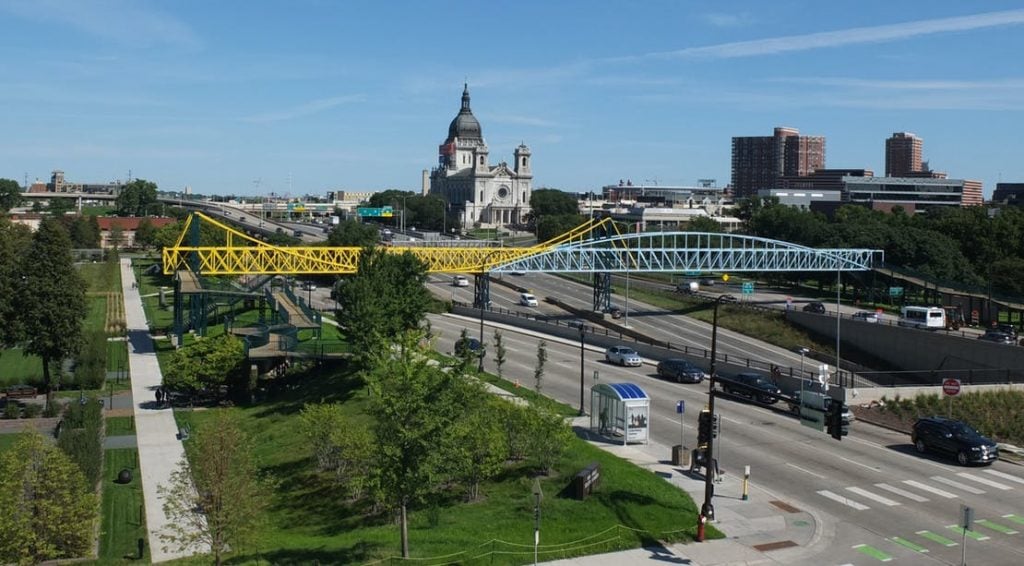
Siah Armajani, The Irene Hixon Whitney Bridge (1988). Photo by Paul Schmelzer, courtesy of the Walker Art Center, Minneapolis.
Fearing for his son’s safety, Armajani’s father sent him to the US in 1960. The artist enrolled at Macalester College in Saint Paul, Minnesota, where his uncle taught, to study art and philosophy. There, Armajani met his wife, Barbara Bauer, whom he married in 1966.
Armajani remained in the Twin Cities, and made major works in the region, including The Irene Hixon Whitney Bridge, a 375-foot steel bridge featuring a John Ashbery poem that crosses a 16-lane highway to connect the Minneapolis Sculpture Garden and Loring Park. (The bridge was repainted and lit for the first time in 2018, in honor of the Walker retrospective.)
The Walker was the first institution to acquire Armajani’s work, purchasing the painting Prayer (1962), which featured densely scrawled fragments of Farsi poetry, for $500 after he submitted it to that year’s biennial.
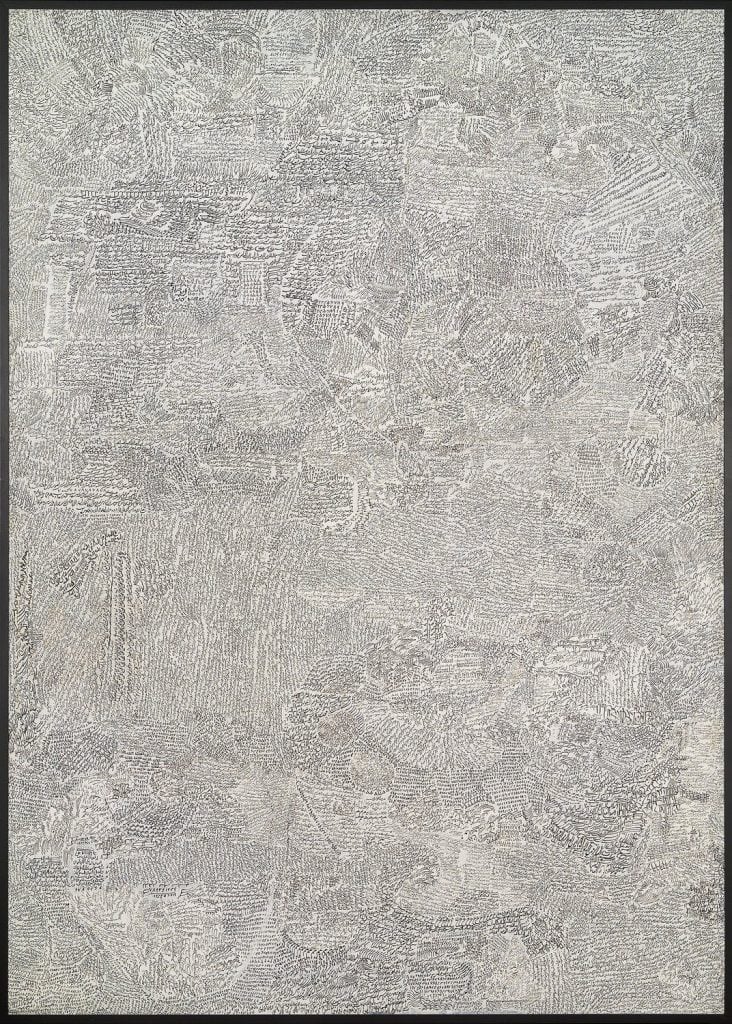
Siah Armajani, Prayer (1962). Photo courtesy of the Walker Art Center, Minneapolis.
The artist went on to teach at the Minneapolis College of Art and Design from 1968 to ’74, where he met his close friend, fellow artist Barry Le Va.
Armajani expanded his own practice as one of the first artists in the US to experiment with computer-based art, taking a computer science course in Minneapolis.
With the assistance of the University of Minnesota’s Hybrid Computer Laboratory, he began making computer-generated films and printouts. At the university, Armajani ran the calculations for his unrealized Conceptual work North Dakota Tower (1968), a structure that was to be 18 miles high and two miles wide, and which would have cast a shadow across the entire length of the titular state.
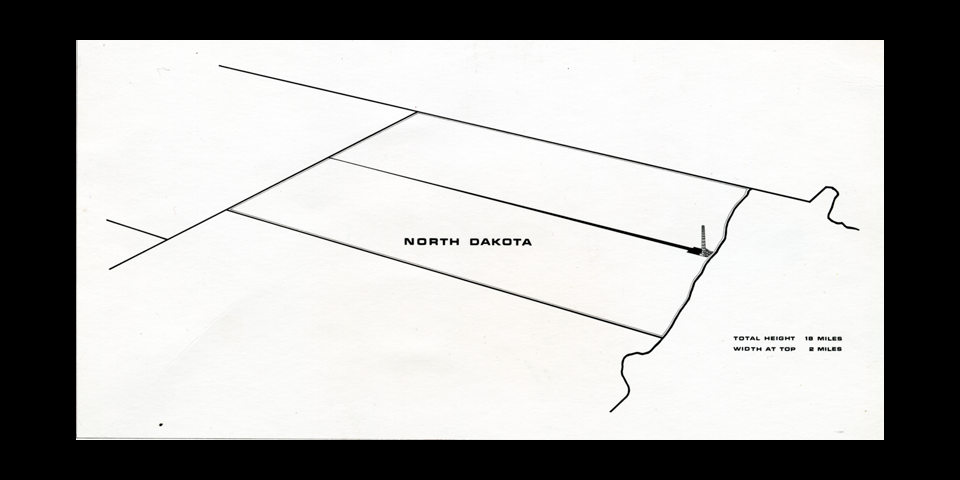
Siah Armajani, North Dakota Tower (1962). Courtesy of the Walker Art Center.
In 1996, Armajani was commissioned to design the cauldron for the centennial edition of the modern Olympic Games in Atlanta. (Boxer Muhammad Ali memorably ignited the flame with the Olympic torch during the opening ceremony.) Armajani later disowned the project, according to Art Papers, but art critic Christopher Knight dubbed it “Atlanta’s Eiffel Tower.”
This February, the stainless steel cauldron atop its 111-foot-tall tower was lit for the first time since the ’96 games. (The occasion was the US Olympic marathon trials for the since-postponed 2020 Tokyo Olympics.)
Also in 1996, Armajani created a public art installation for in New York, erecting the 65-foot-tall sculpture and pedestrian walkway Lighthouse and Bridge (1996) outside Staten Island’s St. George Ferry Terminal, which was demolished in 2018 after rust caused it to deteriorate. (At the time, the New York City Department of Cultural Affairs was working with the artist on a replacement work, but representative of the department confirmed to Artnet News that Armajani withdrew from the project earlier this year.)
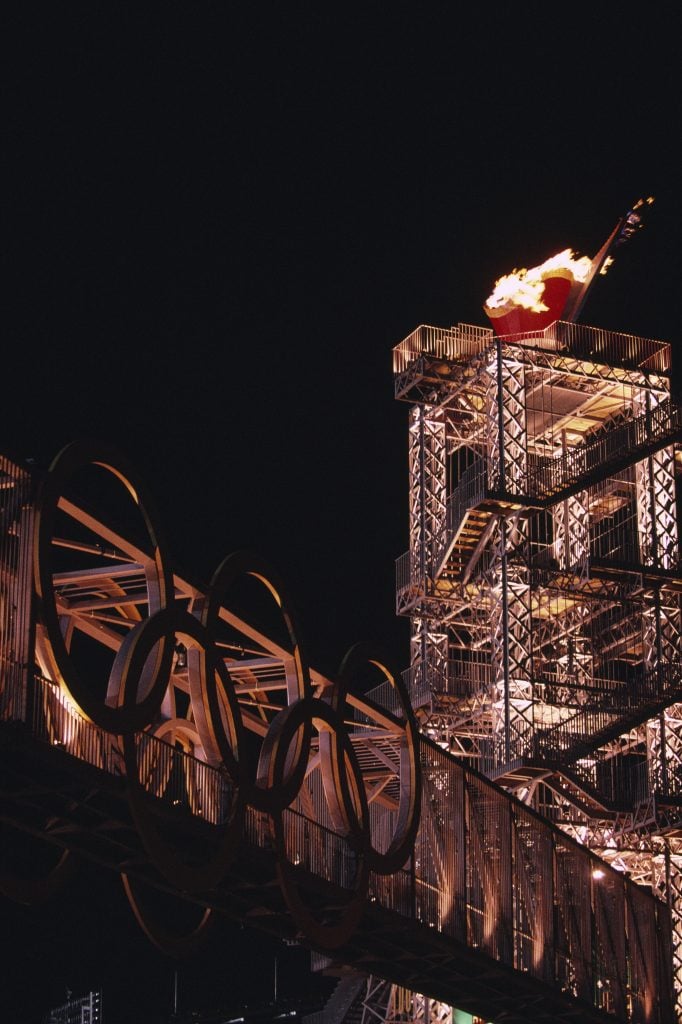
The Olympic flame glows at night in the cauldron designed by Siah Armajani at Atlanta’s Centennial Park during the 1996 Olympic Games. Photo by Haslin Frederic/Corbis via Getty Images.
Armajani’s work can still be seen in New York at the Waterfront Plaza in Battery Park City, outside the former Winter Garden at Brookfield Place, completed in 1988. Working in collaboration with architect Cesar Pelli, artist Scott Burton, and landscape architect M. Paul Friedberg, he engraved poetry by Walt Whitman and Frank O’Hara celebrating New York into the railing overlooking the Hudson River.
“Public sculpture is not based upon a philosophy which seeks to separate itself from the everydayness of everyday life,” Armajani wrote in Manifesto: Public Sculpture in the Context of American Democracy, which he composed between 1968 and ’78, and revised in 1993. “Public sculpture should not intimidate, assault, or control the public. It should enhance a given place.”
Later works were inspired by conflict in the Middle East, such as Fallujah (2005), Armajani’s contemporary take on Pablo Picasso’s antiwar mural Guernica; and Seven Rooms of Hospitality: Room for Deportees (2017) a response to the death of migrants from Iraq, Syria, and Afghanistan who asphyxiated in an abandoned refrigerator truck in Austria.
Armajani earned honors including France’s Chevalier de L’Ordre des Arts et des Lettres and the McKnight Foundation Distinguished Artist Award, both in 2011. He was featured in the US Pavilion at the Venice Biennale (1980), the Whitney Biennial in New York (1981), Skulptur Projekte Münster (1987), and the Carnegie International in Pittsburgh (1988).
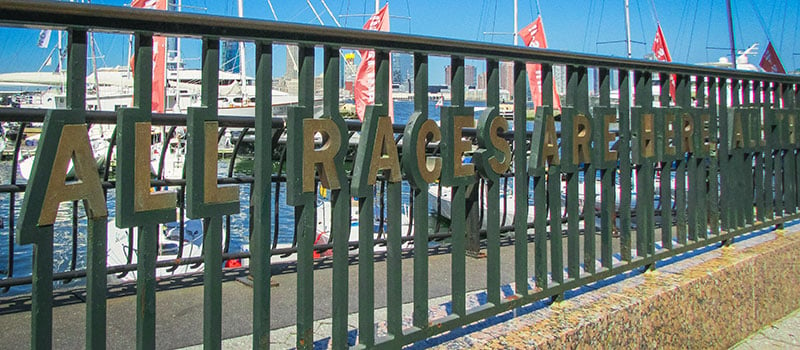
Siah Armahani’s work at Waterfront Plaza outside Brookfield Place in New York City. Photo courtesy of the Battery Park City Authority.
Other major exhibitions include shows at the ICA Philadelphia (1985), Kunsthalle Basel and the Stedelijk Museum in Amsterdam (1987), the Museo Nacional Centro de Reina Sofia in Madrid (1999), the Museum d’Art Moderne et Contemporain in Geneva (2007), the Nelson-Atkins Museum of Art in Kansas City (2008), and Parasol Unit Foundation for Contemporary Art, London (2013).
Armajani was currently represented by Rossi & Rossi gallery, which held the artist’s most recent exhibition in Hong Kong, in April and May. He is survived by his wife.
“His conceptual and cross-disciplinary investigations were driven by his belief in art’s potential to provoke citizens to interrogate their fundamental democratic responsibilities,” Victoria Sung, the assistant curator at the Walker who co-organized “Follow the Line,” said in an email to Artnet News. “Siah Armajani was generous to younger generations of artists, curators, and scholars who will continue to unpack the complexities of his practice for years to come.”